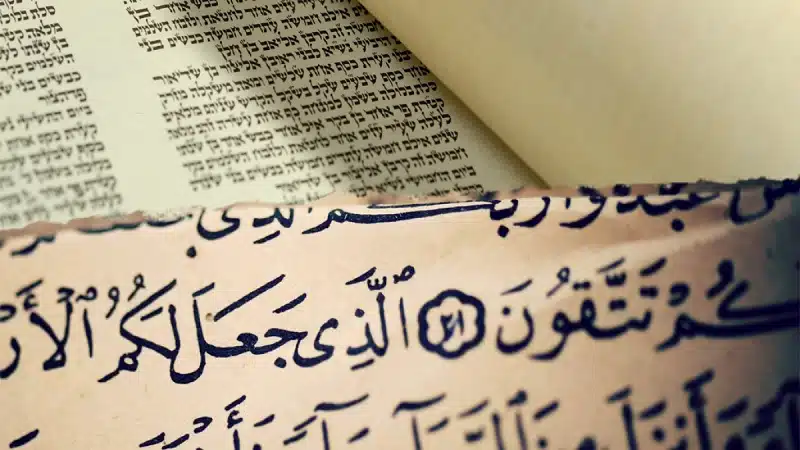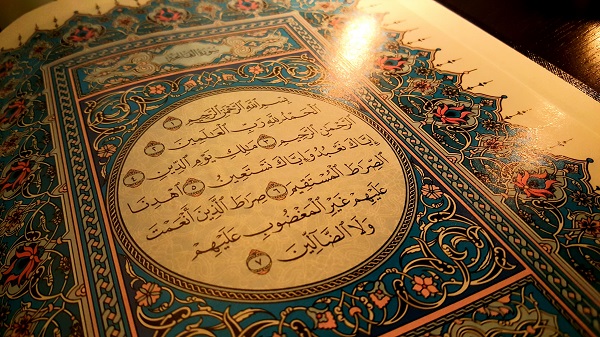Mohammed and Aicha’s marriage: putting an end to the debate
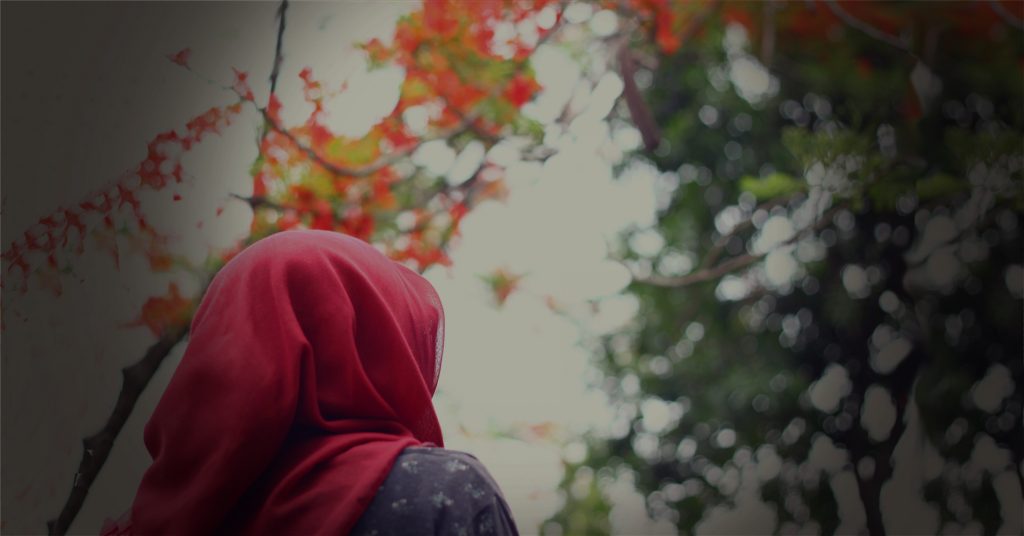
These days, it’s almost impossible to search for information about Islam without encountering warnings about the supposed “dangers” of the religion. Whether it’s claims that Islam promotes terrorism or that a minority seeks world domination through halal food, there are many misconceptions spread by self-proclaimed experts. These voices work tirelessly to demonize a faith that has been around for 14 centuries and has over 2 billion followers worldwide.
One of the most common tactics used to incite fear is appealing to the protective instincts of parents by focusing on the marriage of Prophet Muhammad(ﷺ) to Aisha. Many critics highlight Islamic sources that mention Aisha’s young age at marriage. In one narration, Aisha herself says :
This narration has led to both indignation and doubts about the morality of the Islamic faith. How could a grown man, who is seen as a moral example, marry a child?
However, this criticism is based on a misunderstanding of the historical context. While such reactions might seem valid from a 21st-century Western perspective, they don’t hold up when considering the social norms of people who lived more than a thousand years ago.
Historical realities are often complex and require effort to understand, especially when false ideas have already taken root in popular sentiment. This challenge is captured by Brandolini’s Law, named after Alberto Brandolini, who said: “The amount of energy needed to disprove an idiocy is an order of magnitude greater than that needed to produce it.”
This article aims to address misconceptions about the Prophet’s morality and dispel the accusations regarding his marriage to our mother Aisha.
Why did the accusation that “Muhammad(ﷺ) married a child” not exist before
Since the dawn of Islam, detractors have spared no effort to attack the message of the Quran, as Allah warned us:
From the polytheists of Mecca who called the Prophet a sorcerer to the churches of the Middle Ages who invented the myth of polytheistic Arabs worshipping a stone in the desert, none of them used the Prophet’s marriage to Aicha. Why? Because marriage at an early age was not an anomaly among our ancestors, here are a few examples of early marriage that prove this practice was common:
Mary, Mother of Jesus
It’s strange how some evangelists slander the marriage of the Prophet Muhammad(ﷺ) to Aisha, even though by their standards, she was considered an adult. But they never question Joseph’s marriage to Mary. The Catholic Encyclopedia says that Mary, Mother of Jesus, was 12 years old (and Joseph was 90) when they married :
A year after his wife’s death, as the priests announced through Judea that they wished to find in the tribe of Juda a respectable man to espouse Mary, then twelve to fourteen years of age. Joseph, who was at the time ninety years old, went up to Jerusalem among the candidates
Catholic encyclopedia( Joseph)
Age of marriage in the church
Historically, in the Catholic Church, prior to the 1917 Code of Canon Law, the minimum age for soluble betrothal (sponsalia de futuro) was seven years for contracted couples. The minimum age for a valid marriage was puberty, or nominally 14 for men and 12 for women. The 1917 Code of Canon Law raised the minimum age for a valid marriage to 16 for men and 14 for women. The 1983 Code of Canon Law maintained the minimum age for a valid marriage at 16 for men and 14 for women ( Code of Canon Law: new English translation. IntraText. Washington, D.C .: Canon Law Society of America. ISBN 978-0-943616-79-7)
Marriage in 1697 of 12-year-old Marie Adélaïde de Savoie to 15-year-old Louis, heir presumptive to France. The marriage created a political alliance.
Age of marriage in the Talmud
According to the Talmud, a woman may marry at the age of 12 and may become engaged long before the age of 12:
The minimum age for marriage under Jewish law is 13 for boys, 12 for girls; however, the kiddushin can take place before that, and often did in medieval times.
Judaism 101 https://www.jewfaq.org/marriage.htm
According to Jewish law, marriage at this age is not only permitted but actively encouraged, and fathers are urged to marry off their pubescent daughters promptly.
Age of marriage in Ireland
Until 1972, when a law was passed forbidding men and women to marry before the age of 16, Irish women could legally marry at 12 and men at 14.
While most women married around the age of 20, pre-famine wives were often younger. ( Irish customs)
Other examples of early marriages in the past
Early marriages were commonplace in the past, with some girls being promised at the age of 6 and the marriage only consummated when the girl reached puberty:
- In 385, Saint Augustine ended his relationship with his lover to prepare to marry a ten-year-old heiress(he had to wait two years because the legal age of marriage for women was twelve). By the time he was able to marry her, he had decided to become a Catholic priest and the marriage did not take place.
- Isabelle de France (1389-1409), eldest daughter of King Charles VI, was barely seven when she married Richard II as his second wife in 1396. In the Middle Ages, princely and aristocratic marriages were often contracted in the name of young children for reasons of diplomacy or other material advantages. Canon law, however, decreed that such marriages should not be consummated until both parties were of age, at least twelve for a girl and fourteen for a boy.
- By 1458, at the age of 15, Margaret Beaufort had already married three husbands and given birth to the future King of England. Born in 1443, she married Duke John de la Pole, 2nd Duke of Suffolk, at the age of 7, divorced him 3 years later, and married Edmund Tudor, Earl of Richmond, at the age of 12, with whom she had King Henry 7, when he died two years later, and married Sir Henry Stafford in 1458, at the age of 15,
- Urraca (April 1079 – March 8, 1126), known as the Temeraria, was queen of León, Castile, and Galicia from 1109 until her death. Urraca, aged eight, was married to Raymond of Burgundy. Her pregnancy and stillbirth at 14 suggest that the marriage was actually consummated when she was 12 or 13.
- Darejan Dadiani (12) was married to Heraclius II of Georgia (30) in 1750.
- Tokugawa Masako (12/13) was married to the future emperor Go-Mizunoo (23/24) in 1620.
- Matilda of England (aged approx. 12), daughter of Henry I of England, was married to Henry V, Emperor of the Holy Roman Empire (aged approx. 28), in 1114. They had been officially betrothed four years earlier, in 1110, when Matilda was eight years old, and a few months after the betrothal, Matilda was crowned Queen of the Romans.
- Isabelle de Hainaut (age 10) married Philippe II de France (age 14) in 1180. She had already been engaged to Henri, future Count of Champagne when he was five, and she was only 1.
- Marie de Ponthieu (age 9) was married to Simon de Dammartin (age 27/28) in 1208.
- Mathilde de Brabant (aged approx. 12) was married to Henri VI, Count Palatine of the Rhine (aged approx. 16), in 1212.
- Violant d’Aragon (age 12) was married to Alfonso X de Castille (age 27) in January 1249.
- Catherine de Valois-Courtenay (10) married Philippe I, Prince of Taranto (34), in July 1313.
The age of marriage in Western societies
For Aisha’s age of marriage to be controversial, there must be an appropriate age of marriage without controversy in our society. For us to judge whether a person’s age at marriage is controversial, we must have a clear moral framework from which to judge, but this is not the case. In the United States, the legal age of marriage without parental consent or judicial authorization is 18 in all states. But the age at which one can marry with parental consent is as young as 14 in Alaska. Other states – such as California, Colorado, and Idaho – have no age limit; as long as the couple receives parental or judicial consent, they could theoretically marry at any age.
Since the age at first marriage and the age at first sexual experience do not coincide in Western societies, it’s also useful to look at the average age of first sexual experience. The age of first sexual experience is often a few years before the age of first marriage. In a study of 72137 students aged 17 and under, around 50% said they had not yet had sexual relations, just over 25% said they had had their first sexual experience between the ages of 13 and 15, and just over 10% said they had their first sexual experience between the ages of 11 and 13.
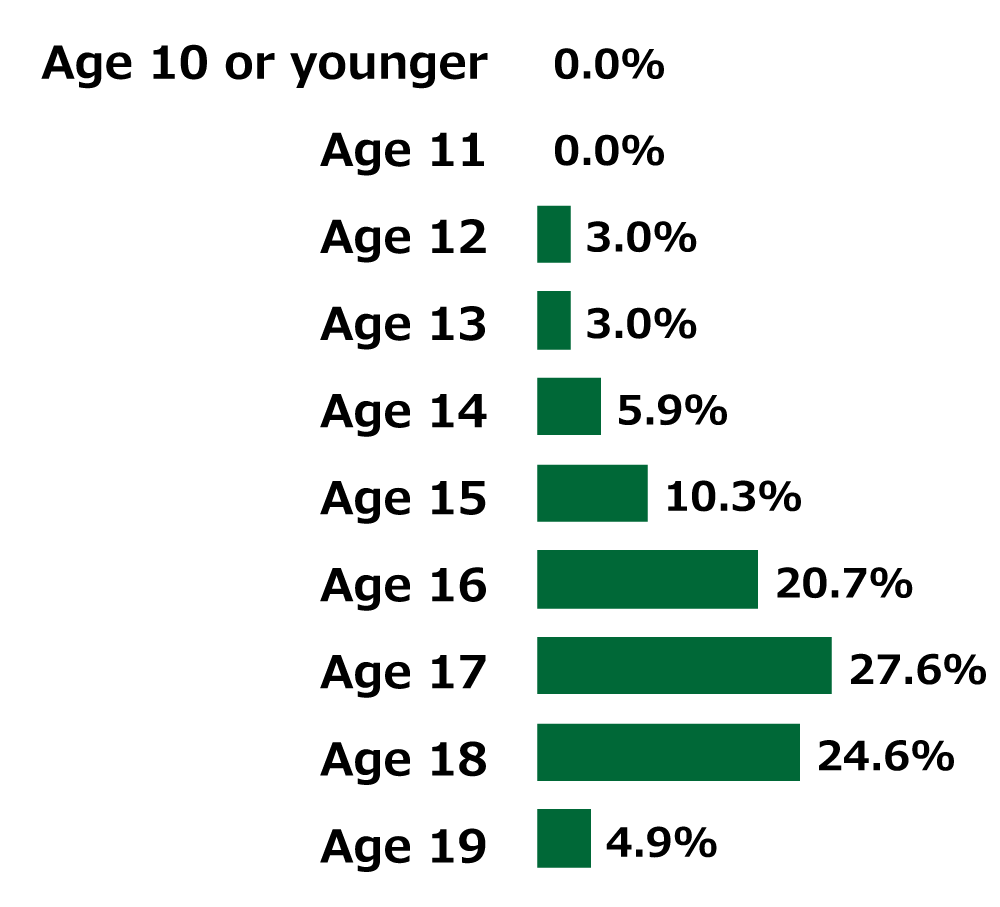
What is considered the appropriate age for marriage (and first sexual experience) varies considerably in our society. The legal age of marriage, the average age of first marriage, and the age of first sexual experience all vary between 11 and 30. When it comes to the age at which one should or can marry or have sex, we (in Western society) have no clear moral basis on which to judge. And we don’t have a clear opinion on the matter or even a clear law legislating the age of marriage. Our opinions and laws vary from state to state and from time to time.
That being the case, how can we judge Aisha’s age at marriage as good, morally sound, acceptable, or not? And how can we, as Muslims, allow a society with such varied opinions on this issue to judge the marriage of ouProphet when it can barely judge for itself?
It’s also worth noting that, although the Prophet’s marriage is closely scrutinized by Western critics, he could have legally married ‘Aisha – having the full support of her family – even in America (remember that in many states, there is no age limit for marriage. ; only parental and/or judicial support is required).
Aicha’s age in Arabian society in the 7ᵉ century
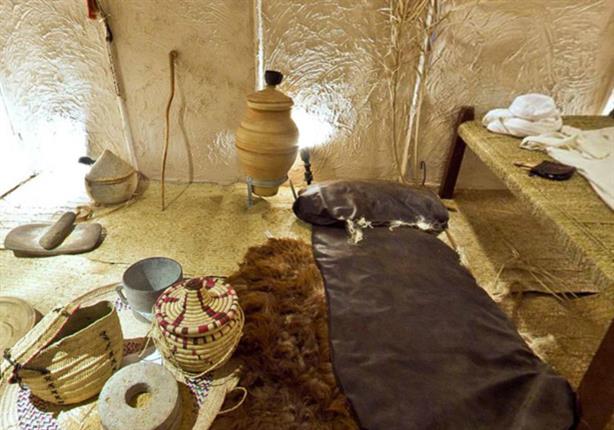
Aicha was already engaged before the Prophet
Before the Prophet Muhammad(ﷺ) married Aisha, the latter was already engaged to Mutʿim ibn ʿAdiyy, who was not a Muslim. So Abū Bakr went to ʿAdiyy’s house and found that the family feared that ʿĀʾisha would convert their son to Islam, so they put an end to the engagement. As a result, the Prophet ﷺ married ʿĀʾisha.
This allows us to conclude that when “Aisha married the Prophet,” she was mature enough to marry in general. So, the age at which “Aisha married the Prophet” was considered culturally appropriate. Had the Prophet not married Aisha, she would have been married to someone else in a similar time frame.
Prophet Muhammad(ﷺ) ‘s marriage to Aisha was not consummated until Aisha had reached puberty.
For those who consider Aicha a child, they are told: “Aicha has reached puberty, and God says that a person is capable of reasoning and making a decision as soon as he has reached puberty, the proof: ‘the acts committed are counted as soon as the child has reached puberty,’ so she was not a child.
The fact that she was nine years old when she reached puberty should come as no surprise, especially in view of recent studies that have shown that the onset of puberty has fluctuated considerably throughout history. For example, while it would have been normal for a girl to start puberty around the age of 14 during the Western Industrial Revolution (18th-19th century), in the 21st century, some girls start puberty as early as six:
The decline in menstrual age has slowed since the middle of the twentieth century in developed nations, but the start of puberty, marked in girls by the first signs of pubic hair and breast development, has continued to come earlier. Consequently, puberty now starts earlier and lasts longer. It typically begins at the age of 9 or 10, but sometimes as early as 6 or 7.
Nature.com Early Starters
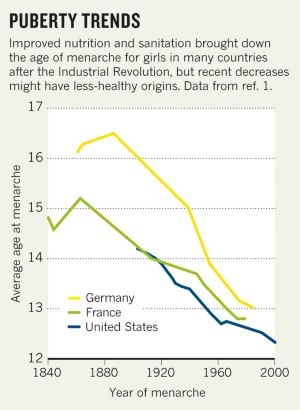
The question, then, is whether women in the Arabian Peninsula reached puberty at the age of nine. As mentioned earlier, ʿĀʾisha said, “If a girl (jāriya) reached puberty at the age of nine, then she is a woman.” [Tirmidhī, Sunan]
In addition, Imām Shāfiʿī said, “I saw many women In Yemen at the age of nine reaching the age of puberty. ‘[Dhahabī, Siyar]
He also said,’ I saw in Ṣan’ā a grandmother who was a girl of twenty-one. Her daughter reached puberty at the age of nine and gave birth at ten. This daughter’s daughter also reached puberty at the age of nine and gave birth at the age of ten. [Bayhaqī, al-Sunan al-Kubrā]
It becomes clear that there are many cases of girls reaching puberty at the age of nine, some even giving birth at the age of ten in the Arabian Peninsula.
Understanding the age of marriage between us and our ancestors
Our “Barbarian” ancestors and the fallacious interpretation of the past
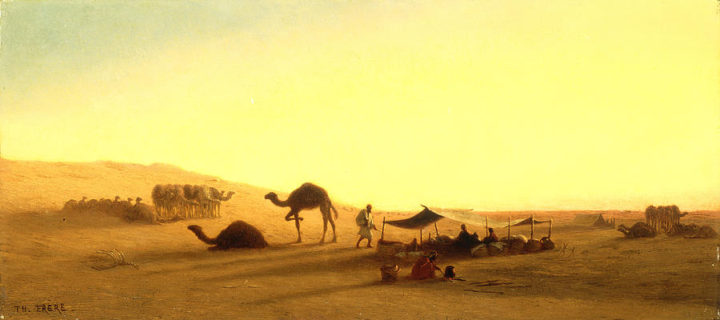
It’s much easier to condemn the desert nomads of the 7th century as “barbarians” than to understand that our moral judgments are as much a function of our environment as the judgments of our ancestors.
Realizing this means recognizing how often we succumb to a fallacious form of reasoning known as presentism—an anachronistic misinterpretation of history based on present circumstances that did not exist in the past. Historians make this mistake very often.
Similarly, when we examine the scientific evidence regarding human development, maturity, and marriage in the past, we find a context that not only dispels moral outrage regarding the marriage between the Prophet Muhammad ﷺ and Aisha but also allows us to appreciate our ancestors for their struggles; for without them, we would not be having this discussion today.
Most men would have married late enough for us to stop thinking of them as children, but many women (especially in Babylonia) married so young that today we would consider them girls, not women. The goal of maximizing fertility in particular must have lowered the age at first marriage, and the price of this goal is the early, one might say premature, end of infancy. For many girls, adolescence was not a time for fun, education, experimentation or vocational training, but rather a time when one was already expected to assume all the responsibilities of a mature woman, as wife and mother.
Amram Tropper, “Children and Childhood in Light of the Demographics of the Jewish Family in Late Antiquity,” Journal for the Study of Judaism in the Persian, Hellenistic, and Roman Period, 37:3 (2006), p. 332.
Our ancestors were neither pedophiles nor barbarians.
Those who believe that we are morally superior to our ancestors attribute this dissimilarity to historical societies’ ignorance of physical and psychosocial maturity or the nefarious intentions of abusing and taking advantage of children. However, it’s a baseless accusation that most of our ancestors didn’t know how to care for their own children, weren’t concerned about their children’s welfare, had evil intentions, or suffered from a global mental disorder (i.e., Pedophilia.) ) – this accusation is easily contradicted by scientific and historical evidence. If it seems impossible to us that a nine-year-old could be capable of doing anything other than going to school and playing, it’s only because we mistakenly assume that children’s circumstances and abilities have remained static throughout history.
For example, today, we expect our children to spend several years in primary and secondary education and at least four years at university to provide them with economic and social opportunities. This is a perfectly rational expectation, given an average global life expectancy of over 70 years and the increasing complexities of the global world.
However, such conditions did not exist 1400 years ago. While people in the past sometimes reached an older age, this was not the norm. For example, the average life expectancy of a working-class Roman citizen in late antiquity was around 35 to 40 years – if they lived past childhood.
The female half of society had it no easier. The average life expectancy for women was between 34.5 and 37.5 years if they managed to live past infancy. High infant mortality rates meant that women had to go through 5 to 7 full-term pregnancies just to keep the population stable. Add to this high maternal mortality in childbirth – due to iron deficiency resulting from a combination of continuous pregnancies and poor diet – and you have an extremely fragile situation. Given these high mortality rates, it made sense to start childbearing as early as possible.
Much of the tension in investigating age in the past stems from the assumption that we can link “biological” age to “social” age… Also, unlike modern Western society where social age is closely linked to chronological age, in many “traditional” societies, stages of maturation are recognized in the definition of age… These stages take into account not only chronological age but also the skills, personality and abilities of the individual.
Siân Halcrow and Nancy Tayles, “The Bioarchaeological Investigation of Childhood and Social Age: Problems and Prospects,” Journal of Archaeological Method and Theory, 15:2 (2008), p. 203.
A journey into the past
To make this point more convincing, let’s try a thought experiment. Imagine we have a time machine (as in the movie Back to the Future.
With an understanding of morality firmly rooted in presentism, you assume that all you have to do is apply contemporary laws to the past to solve all our ancestors’ problems and improve the Future. With just this intention in mind, you enter your machine and travel back 1400 years to the Arabian Peninsula.
Upon your arrival, you convince the native inhabitants of your moral superiority, and they are awed by your ability to traverse time and space. They make you their leader and adopt your laws, waiting until they are 18 to assume adult responsibilities like work, marriage, and warfare. Initially, your new utopia thrives, but over time, you notice a troubling decline in the population. Intrigued, you decide to investigate.
What you discover is astonishing: the average age at death has remained unchanged, alongside the customs of late antiquity. Instead of fostering adulthood at puberty, you now have middle-aged individuals acting like “children,” consuming resources without contributing to society. These young people face just 17 years on average to marry and raise families, often dying before their children reach adulthood. This leads to a disproportionate ratio of minors to adults, leaving future generations reliant on those unable to perform basic societal tasks. Ultimately, your social experiment results in a civilization crippled by its own laws and a population facing extinction, either from natural causes or conquest by neighboring tribes that recruit at older ages.
You can understand at this point that the judicial and cultural structures of the past were not necessarily the problem but rather the conditions in which these customs manifested themselves. However, it’s too late – your claim to moral superiority has destroyed a once-thriving society, and the whole course of history has been altered as a result. Future generations have ceased to exist, and you may even have endangered your own existence.
Aicha, the woman behind the number

Describing “Aisha (ra) as a child is meant to portray the Prophet” in a certain light. A light that attempts to integrate ‘Aisha (ra) into a broader narrative of Muslim women as “docile, submissive and oppressed” and Muslim men as “oppressive, abusive and unjust.”
This narrative is both malicious and dishonest. The controversy surrounding her age prevents us from discussing her legacy and contribution to Islam, her life and marriage to the Prophet ﷺ, and her knowledge and wisdom. Aisha is much more than “the child-wife,” the enemies of our beloved Prophet, peace be upon him, try to paint her that way. Yet she was a saint, a sage and a scholar – can we please make this heritage the focus of our discourse around this incredible woman?
The Prophet and Aisha: a love story
If you want to read the perfect love story, I recommend you don’t read “Romeo and Juliet” but read the story of Muhammad(ﷺ) and Aisha, in Aisha’s own words explaining how beautiful the relationship was between her and the Prophet Muhammad(ﷺ).
The Prophet was a loving husband. Aisha spoke of the times she enjoyed meals with him. He enjoyed his meals only when she was sitting next to him. They drank from a cup, and he watched where she placed her lips so he could place his lips in the same area. He ate from a bone after she had eaten and placed his mouth where she had eaten. She also said that he placed pieces of food in her mouth, and she would do the same.
“Aisha and the Prophet would use a coded language indicating their love. She asked the Prophet how he would describe his love for her. TheProphett Muhammad(ﷺ) responded by saying, “Like a strong knot.” In other words, The more you pull, the stronger it gets,
From time to time, Aisha would playfully ask, “What’s the knot like?” TheProphett would reply, “As strong as the first day (you asked).”
When asked, “What was the prophet doing in his home?” She replied, “He kept himself busy serving his family.” When one of his companions asked him, “Who is the person you love most?” he instantly replied, “Aisha.”
Before his death, the Prophet Muhammad(ﷺ) ‘s very last words to his companions were: “Treat women gently! They are your committed partners and supporters… You have taken them as a deposit from God and their pleasure is lawful to you by permission from God. So be pious where women are concerned, and take care to wish them well.”
Aicha: What a woman!
The role of prophets is to bring God’s message to mankind. Muhammad(ﷺ) needed someone to record his teachings and help him spread the message of Islam. Aisha was recognized from an early age for her extraordinary memory, so much so that she attracted the Prophet’s attention. So Muhammad(ﷺ) married her at a young age and educated her. She spent most of her time studying and memorizing Revelation. Her knowledge was crucial to the spread of Islam. Given her proximity to the Prophet, she was one of the few people to record more than 2,000 traditions.
Al-Zuhri said: If Aisha’s knowledge had been compared with that of all women, Aisha’s knowledge would have been better [Adahabi].
Moreover, God endowed her with intelligence, discernment, and speed of memorization.
- Ibn Katheer said, “There was nothing like Aisha in the nations in her memorization, knowledge, eloquence, and reason.”
- Imam Eddahbi described her as, “The most learned of the women of this ummah, I know of no woman in Muhammad(ﷺ) ‘s ummah or among women as learned as she.”
- Abu Omar bin Abd al-Barr said: “Aisha was unique in her time in three sciences: the science of jurisprudence and the science of medicine. And poetry.
- She lived almost 50 years after Muhammad(ﷺ) ‘s death, and her knowledge was indispensable and appreciated by all. Indeed, the Prophet’s companions often came to her when they had doubts on a given subject. Abu Musa Al-Ashari once said: If we, the companions of the Messenger of God, had difficulties concerning a given subject, we would ask Aisha for help.
- Abu Musa al-Ashari says in another tradition: “Aisha never misinformed us about the solution to a problem about which we had doubts. (Sirat-I-Aisha, under the authority of Trimidhi, P. 163)
- Urwah bin Az-Zubair said of her: “I have never found anyone so versed (as Aisha) in the knowledge of the Quran, the lawful, the unlawful, genealogy (Ilmul-Ansab) and Arabic poetry.” This is why even the wisest companions consulted Aisha to resolve complex issues. (Jala-ul-Afham by Ibn Qaiyem and Ibn Sa’ad, Vol.2, P.26)
- Aisha was a great teacher and speaker. Men and women of the time came from all over to hear her. Al-Ahnaf described her in glowing terms: I have heard, to this day, speeches from Abu Bakr, Umar, Uthman, Ali, and the caliphs (Khulafa), but I have never heard speeches as persuasive and as beautiful as those coming out of Aisha’s mouth.
Aisha’s marriage to the Prophet was no accident. It was meant to be. And God is the perfect knower.
Was Aicha more than 18 years old?
Following this attack on tProphethet on the subject of Aicha, some have tried to find loopholes in the hadith rather than understand the historical context of the subject. To these people, we reply that we do not reject a saying in the most authentic books of Islam because we are ashamed of it, but we must understand the context and respond to allegations with logic and certainty. A detailed response on the validity of these hadiths concerning Aicha’s age can be found on the site Islamweb.

